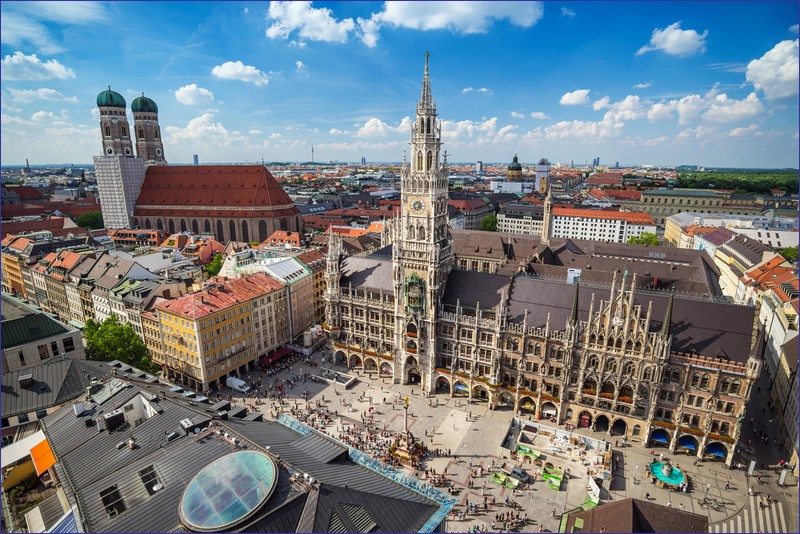Munich is the largest city in Bavaria, widely known for hosting the Oktoberfest and for the football club Bayern Munich. To fully explore the Bavarian capital, you should plan to spend several days, as it offers numerous interesting landmarks, museums, churches, and family-friendly attractions. Munich is also one of the largest railway hubs in Germany. Long-distance and international trains run to major cities in neighboring countries, as well as to Italy and Hungary. Within a few hours, you can reach Germany’s largest cities, and there are also night trains available, for example to Ljubljana and Zagreb.
In this article, I’ve briefly described suggestions for day trips from Munich by train, focusing only on destinations that can be reached by regional trains within approximately two hours one way. The list is not exhaustive, but the number of possible trips is so large that a detailed guide would take me around five days to complete.
Direction: Passau
Freising – One of the oldest towns in Bavaria, located just a few kilometers from Munich. With around 50,000 residents, it boasts a compact Old Town. A highlight is the richly decorated cathedral (built 1159–1205) situated on Cathedral Hill, which can be accessed via a funicular railway. At the southwestern edge of the Old Town, in the former Benedictine monastery, you’ll find the Weihenstephan Brewery – the oldest brewery in the world, founded in 1040. Visitors can also explore the Freising City Museum (Stadtmuseum Freising) and a model of medieval Freising at the main square (Marktplatz). N
Moosburg (optional) – Fans of sacred architecture should visit the Church of St. Castulus, dating back to the early 13th century. The interior features a 14-meter-high Marian altar from 1514. The town has a small, cozy center.
Landshut – In the Middle Ages, it was the main seat of the Dukes of Lower Bavaria. The city retains its medieval layout. In the city center, the town hall and Germany’s first Renaissance palace (modeled after one in Mantua, Italy) stand out. The Church of St. Martin (1385–1500) features the tallest church tower in Bavaria, reaching 130 meters. Overlooking the town is Trausnitz Castle, with a medieval keep and a Renaissance palace from the mid-16th century. The charming town center is about 1.5 kilometers from the train station.
Plattling (optional) – A railway junction where you can transfer to trains heading to Bayerisch Eisenstein, home to a train station straddling the Czech-German border and a small railway museum. The Plattling–Bayerisch Eisenstein line is scenic, and in the summer season, a retro train runs the route. In Plattling itself, the main point of interest is the Church of St. James.
Osterhofen (optional) – In the town center stands the beautifully adorned Baroque Asam Basilica, featuring stunning ceiling frescoes.
Passau – A city located at the confluence of the Danube and Inn rivers, which has experienced several floods. Its history dates back to Roman times. Although some historic buildings were destroyed in 17th-century fires, the city center remains rich in Baroque architecture. Key sights include St. Stephen’s Cathedral, considered a masterpiece of Italian Baroque; the Old Town Hall, made up of eight merged houses with a neo-Gothic tower; the Glasscherben Villa with its facade decorated in broken glass; and the Schaibling Tower (1481), which stands by the Danube along a small preserved stretch of the city wall. High above the city rises Veste Oberhaus fortress, built on a steep rocky hill. It now houses a youth hostel, museum, and restaurant, and offers panoramic views of the city. Passau is the starting point of a popular cycling path to Vienna and offers Danube cruises.

Direction: Garmisch-Partenkirchen
A picturesque railway line runs through mountain towns and ski resorts, offering views of the Alps from the train. From Garmisch-Partenkirchen, you can continue by train to Innsbruck.
Tutzing (optional) – A small town on the shores of Lake Starnberg (Starnberger See). Ideal for a lakeside walk with Alpine views in the distance, and swimming in the summer season.
Murnau am Staffelsee (optional) – A small town at the foot of the Alps with a quaint center made up of two streets lined with well-kept, colorful townhouses. A few kilometers away is the large Staffelsee Lake, with walking trails around it.
Garmisch-Partenkirchen – One of Germany’s most famous ski resorts, known for hosting Ski Jumping World Cup events. The town center features colorful houses with painted facades. Historical landmarks include St. Martin’s Church from the 13th century, expanded in the 15th century, with preserved Gothic frescoes and a vaulted ceiling from 1446. The surrounding area offers numerous hiking and skiing trails. The small Werdenfels Museum is worth visiting to learn about the town’s history and local life.
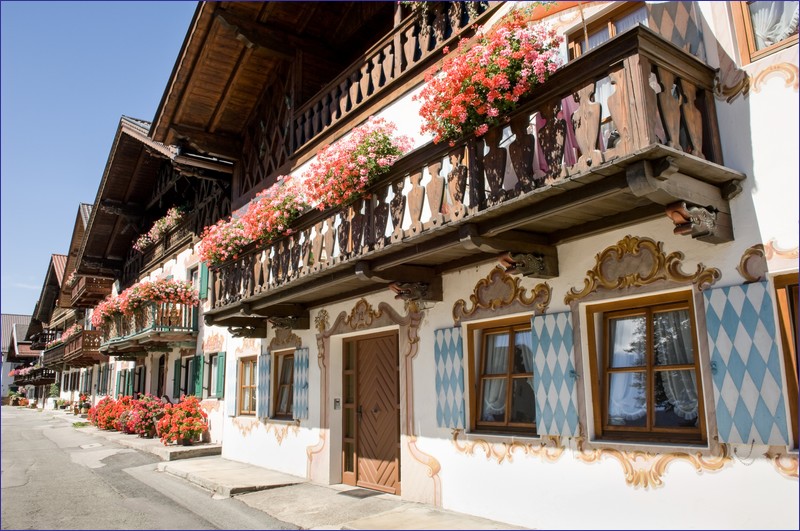
Day trips from Munich by train – Direction: Füssen
Füssen – An important trading center in the Middle Ages, whose former glory is still visible in the colorful townhouses along Reichenstrasse and in its historic churches. Towering over the town center is Hohes Schloss, the former summer residence of the bishops of Augsburg. The castle’s exterior features beautiful wall paintings. Part of the castle is open to visitors, while another part now houses the local tax office. Another significant landmark is the St. Magnus Monastery, a massive complex from the early 18th century.
Remnants of the old city fortifications have been preserved, including five towers and the Sebastiantor gate tower. From the footbridge over the Lech River on the outskirts of town, you can see a small waterfall.
Just a few kilometers from Füssen lies the famous Neuschwanstein Castle, heavily visited by tourists. Also worth seeing is the romantic Hohenschwangau Castle, and nearby walking trails offer scenic views along Schwansee Lake. Close to the town is Alpsee Lake, one of the cleanest in Germany. Nearby, visitors can explore the Museum of the Bavarian Kings.
Direction: Ulm
Augsburg – The third largest city in Bavaria, located on the Lech River. The most important landmarks in the city center include the Town Hall from 1615–1616, considered a gem of German Mannerism; the Cathedral of the Virgin Mary, the city’s oldest monument; the Fugger Palace, built in the Italian style between 1512–1515; the Arsenal with its Mannerist façade; and the former Carmelite St. Anne’s Church, which houses the Fugger family’s burial chapel. St. Anne’s is also the oldest Renaissance building in Germany. Five city gates have been preserved, and it’s worth visiting the Fuggerei, a 16th-century housing estate for the poor.
The former Romanesque church now houses the Roman Museum (Römisches Museum). Tourists may also be interested in the Maximilian Museum, featuring historical city artifacts including old fountains; the Museum of the Jews of Swabia; the Textile and Industrial Museum; the Fugger and Welser Experience Museum; and the Railway Museum, located outside the center. For families, the Natural History Museum is recommended.
Günzburg (optional) – A town of 20,000 with a charming center. On the outskirts lies Legoland Deutschland (5 km from the railway station).
Leipheim (optional) – 3 kilometers from the railway station is the Leipheim Airfield Museum (Fliegerhorstmuseum Leipheim), operated by volunteers and located in a former air force base. Exhibits include helicopters and military vehicles.
Ulm – A city that was 85% destroyed during air raids in 1944 and 1945. Its symbol is the Ulmer Münster Cathedral, a five-aisle basilica built from 1377–1543, with the tallest church tower in the world (161.35 m). Other landmarks include the Gothic-Renaissance Town Hall, preserved half-timbered houses in the Fischerviertel (fishing quarter), Reichenauer Hof manor (1370–1535), and the Municipal Theater from 1641. Museums in Ulm include the Ulm Museum (with exhibitions on local history and modern art), the Museum of Upper Swabia, the Museum of Bread and Art, and the Natural History Museum.
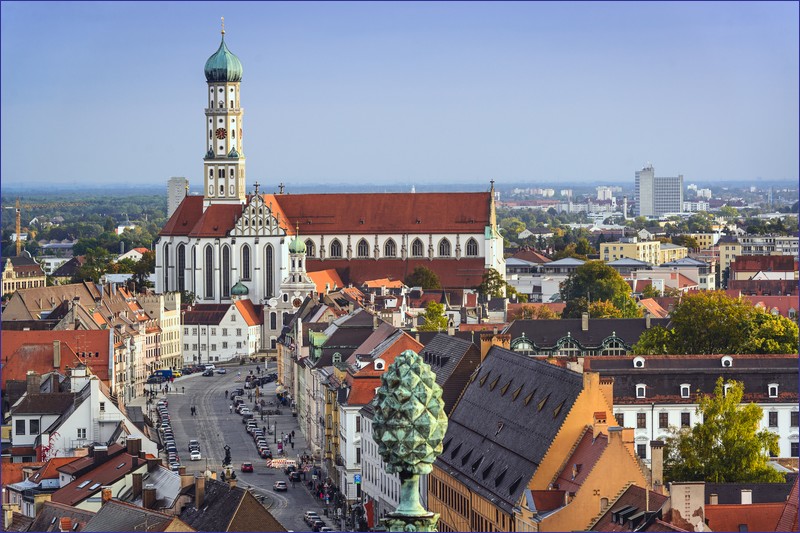
Direction: Regensburg
Regensburg – In the Middle Ages, it was the most dynamic trade and cultural center of southern Germany. Today, it’s a UNESCO World Heritage Site. The city center is charming, featuring the Gothic Cathedral of St. Peter (Regensburger Dom), the Stone Bridge (Steinerne Brücke) over the Danube (310 meters long, built 1135–1146), the Old Town Hall from the 15th century with its impressive assembly hall, and the Basilica of the Nativity of the Virgin Mary. Interesting museums include the Regensburg Museum of History, the House of Bavarian History, the Museum of Natural Sciences, the Danube Shipping Museum, and the Golf Museum.
Direction: Lindau and Bregenz
Memmingen (optional) – A town of just under 50,000. Remnants of the old city walls and four city gates remain. Highlights include the baroque interior of the Church of the Holy Cross and the picturesque Stadtbach stream. The town can be viewed from the Church of St. Martin’s tower. Local history is presented in the Municipal Museum, and the Antonite Monastery houses the Antonite Museum and the Bernhard Strigel Museum, dedicated to the local painter.
Lindau – One of the most beautiful towns in Germany, in my opinion, picturesquely located on Lake Constance (Bodensee). An ideal spot for a day trip with a stroll through the charming, well-kept old town. In the southern part of the Old Town is the harbor and an old lighthouse from the 13th century. A newer lighthouse stands on the nearby pier. The Gothic-Renaissance Old Town Hall (1422–1436), with its frescoed façade, is a standout. Walking paths line the lakeshore.
Bregenz (Austria) – You can take a train from Lindau to Bregenz, also located on Lake Constance. The city isn’t particularly beautiful, but it offers a peaceful lakeside promenade and the impressive floating lake stage theater. You can take the Pfänder cable car for breathtaking views of the lake and surrounding area. Of note to Polish visitors is the Raczyński Villa. The area is also known for its many hiking trails.
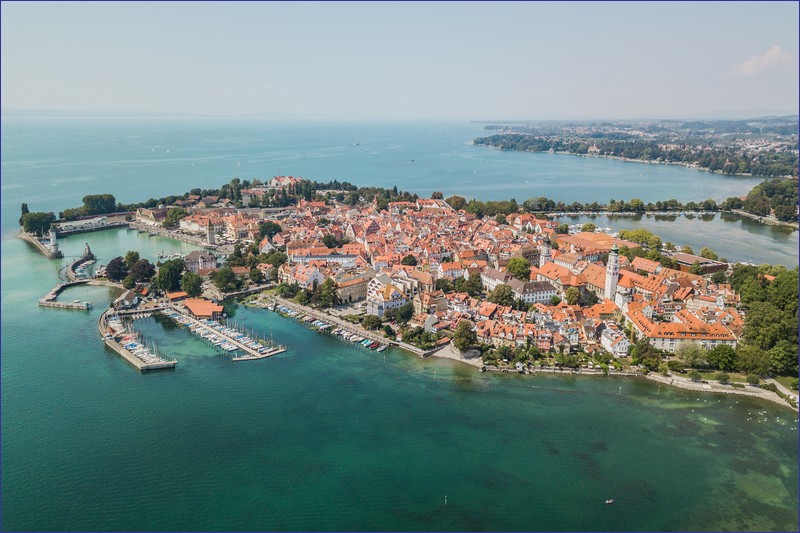
Direction: Nuremberg
Nuremberg – The second largest city in Bavaria, located on the Pegnitz River. Though much of the historic center was destroyed during Allied bombings in 1944–1945, it has been rebuilt and is now among the most beautiful in Germany. Key landmarks include the Church of Our Lady (Frauenkirche) with richly decorated sculptures and a Gothic altar from 1445, the Town Hall, the Gothic Church of St. Lawrence, the Heilig-Geist-Spital (partially built over the river), and some surviving burgher houses. The city is dominated by a castle complex consisting of the Imperial Castle (Kaiserburg), Burgrave’s Castle (Burggrafenburg), and City Castle (Stadtburg). Notable museums include the Germanisches Nationalmuseum (German Art and Culture Museum), which houses valuable artworks, sculptures, and a unique collection of decorative arts. Rail enthusiasts must visit the largest railway museum in Germany, and for families, the zoo with a treetop walk is a good option.
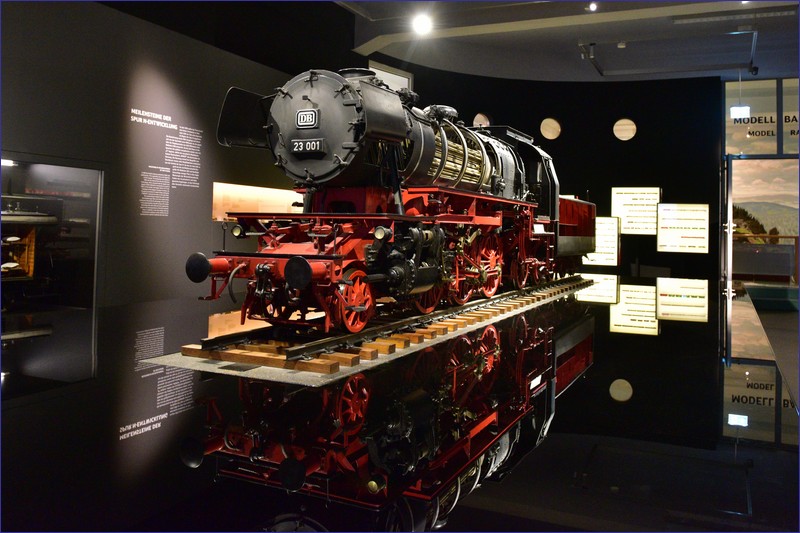
Direction: Salzburg
Bad Endorf (optional) – Famous for its thermal baths, popular with both locals and tourists.
Prien am Chiemsee – One of two stations serving Bavaria’s largest lake. A tourist hotspot. In season, a narrow-gauge railway connects Prien to Stock on the lakeshore (2 km route), operated with a steam or diesel locomotive and retro carriages.
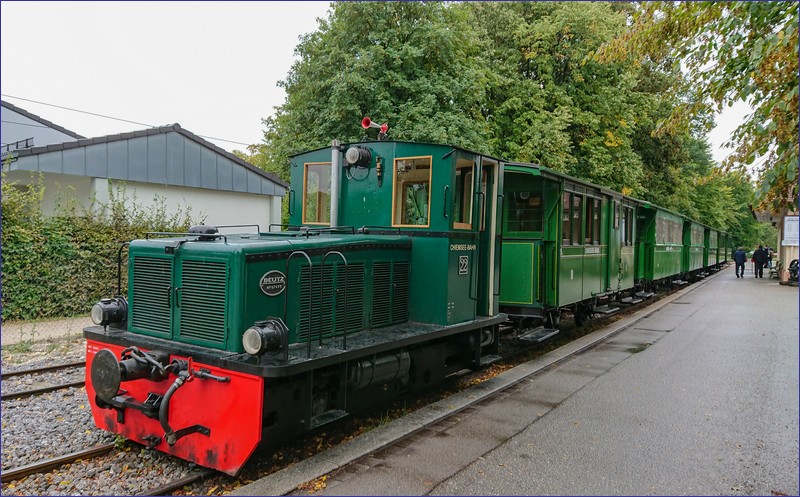
Freilassing (optional) – Railway fans can visit the small Lokwelt museum, located in a former locomotive depot.
Salzburg – One of Austria’s largest cities, associated with Wolfgang Amadeus Mozart. The historic part of the city is about a 15-minute walk from the train station. The compact Baroque old town delights visitors from around the world. The highlight is the 17th-century cathedral, with beautiful organs, decorations, and a main altar; the baptismal font from 1311 has been preserved. A Mozart heritage trail leads through the city. Overlooking the Old Town is the Hohensalzburg Fortress, accessible on foot or by funicular. Notable museums include the Salzburg Museum, Mozart’s Birthplace, Mozart’s Residence, and the Museum of Nature. A few kilometers from the city center is an open-air museum with a narrow-gauge railway.
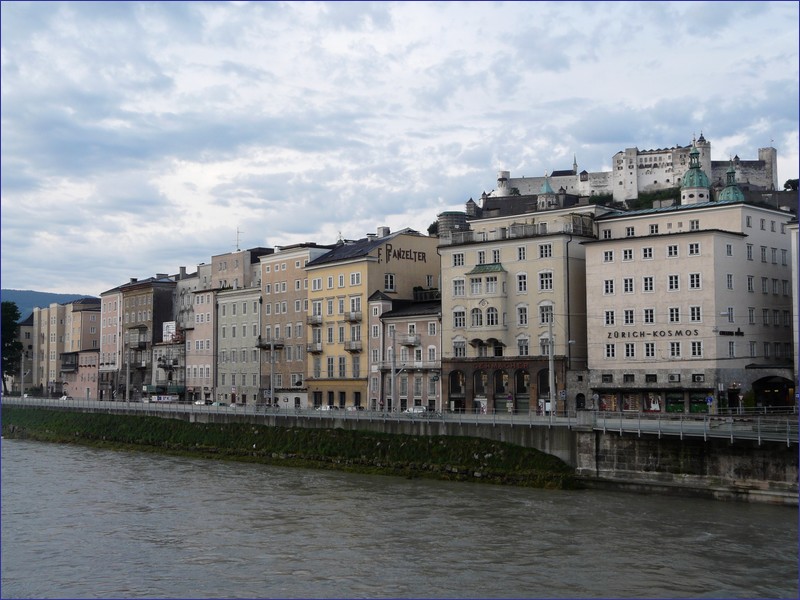
Direction: Oberstdorf
Kempten – A city of 70,000 with a charming center and a 2,000-year history. The most beautiful buildings are found at Town Hall Square (Rathausplatz), including the Town Hall from 1474. Also notable is the Londoner Hof with a rococo façade from 1764. The most important religious monument is the Church of St. Lawrence, a three-aisle basilica with galleries, located in the city’s northwest. Reminders of Roman times include the Cambodunum Archaeological Park and Roman baths. A small Castle Museum of the Allgäu Region is housed in a watchtower, and the Kempten Museum is located in the historic Zummstein brothers’ residence.
Oberstdorf – One of Germany’s most popular ski resorts, located in the Iller Valley. Nearby is the ski jump where the Four Hills Tournament begins. A perfect base for hiking in the mountains. Nearly all historical buildings were destroyed in a fire in 1865. The Local History Museum (Heimatmuseum) showcases the region’s heritage.
Related articles:
Train travel in Germany – a comprehensive guide
